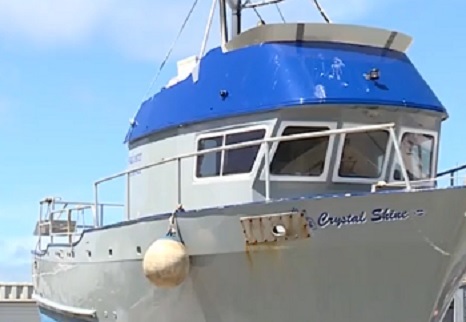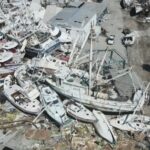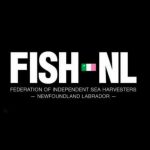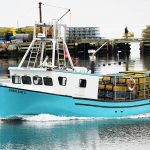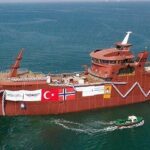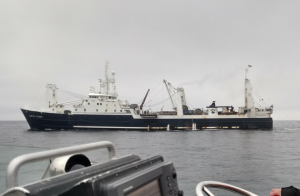Tag Archives: Monterey
Western Flyer Restoration: The John Steinbeck fishing seiner
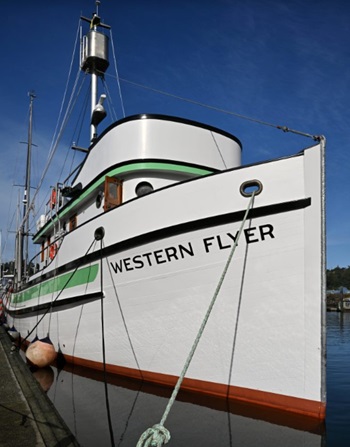 Built in Tacoma, Washington, the state-of-the-art seiner was launched from Western Boat Building Company in 1937, destined for the sardine trade of Monterey, California. Builder and shipyard owner, Martin Petrich Sr, specialized in sturdy vessels. For Western Flyer, he used a single, 64ft piece of old-growth fir for the keel; ribs were white oak; fir planks steamed, fitted, and caulked with cotton. The boat’s strength was offset by a graceful sheer and jaunty wheelhouse. In early 1940, scientist Ed Ricketts and author John Steinbeck combed the Monterey waterfront for a vessel that would carry them, along with a small crew and makeshift biology lab, on a scientific research mission to Mexico’s Sea of Cortez. No one was willing until Western Flyer tied to the pier and her captain, Tony Berry, agreed. 12 Photos, more, >>click to read<< 15:37
Built in Tacoma, Washington, the state-of-the-art seiner was launched from Western Boat Building Company in 1937, destined for the sardine trade of Monterey, California. Builder and shipyard owner, Martin Petrich Sr, specialized in sturdy vessels. For Western Flyer, he used a single, 64ft piece of old-growth fir for the keel; ribs were white oak; fir planks steamed, fitted, and caulked with cotton. The boat’s strength was offset by a graceful sheer and jaunty wheelhouse. In early 1940, scientist Ed Ricketts and author John Steinbeck combed the Monterey waterfront for a vessel that would carry them, along with a small crew and makeshift biology lab, on a scientific research mission to Mexico’s Sea of Cortez. No one was willing until Western Flyer tied to the pier and her captain, Tony Berry, agreed. 12 Photos, more, >>click to read<< 15:37
The Western Flyer Returns Home to Monterey!
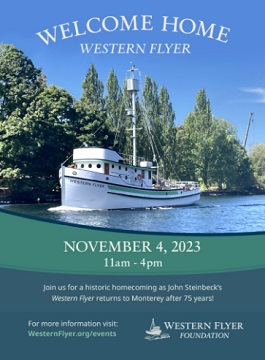 She’s coming home at last! After being away for 75 years, the historic Western Flyer—the sardine fishing boat immortalized by John Steinbeck’s 1951 classic The Log from the Sea of Cortez—will return to her home port of Monterey on Saturday, November 4th. “The Western Flyer was built for Monterey’s sardine fishery in 1937, and while it gained notoriety from its 1940 research trip with John Steinbeck and Ed Ricketts, it’s had a long and storied past as a fishing boat,” said marine geologist John Gregg, founder and board member of the Western Flyer Foundation. “Now restored with a hybrid diesel-electric engine and state-of-the-art marine lab, the Flyer symbolizes a bridge, linking Monterey’s commercial fishing heritage with its leadership in marine science and education.” When Gregg purchased the Western Flyer in 2015, the neglected 77-foot fishing vessel had sunk several times and was almost beyond repair. >>click to read<< 07:50
She’s coming home at last! After being away for 75 years, the historic Western Flyer—the sardine fishing boat immortalized by John Steinbeck’s 1951 classic The Log from the Sea of Cortez—will return to her home port of Monterey on Saturday, November 4th. “The Western Flyer was built for Monterey’s sardine fishery in 1937, and while it gained notoriety from its 1940 research trip with John Steinbeck and Ed Ricketts, it’s had a long and storied past as a fishing boat,” said marine geologist John Gregg, founder and board member of the Western Flyer Foundation. “Now restored with a hybrid diesel-electric engine and state-of-the-art marine lab, the Flyer symbolizes a bridge, linking Monterey’s commercial fishing heritage with its leadership in marine science and education.” When Gregg purchased the Western Flyer in 2015, the neglected 77-foot fishing vessel had sunk several times and was almost beyond repair. >>click to read<< 07:50
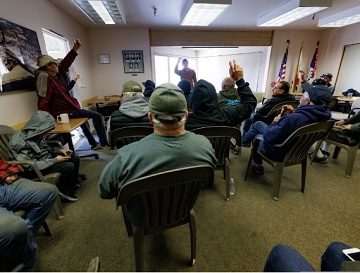
‘It’s not ‘us versus the whales’’: Delayed crab season weighs heavily on Central Coast fishermen
It was six days before Christmas and the December sun shone brightly off the placid waters of the Santa Cruz Harbor, illuminating towers of empty crab pots stacked on the edge of the docks. Inside a nearby meeting room, more than a dozen fishermen from Santa Cruz, Moss Landing and Monterey grabbed donuts and gray plastic chairs to discuss their most urgent concern: how to deal with the economic impact of a Dungeness crab season that, now more than a month behind schedule, had yet to open. >click to read< 06:47

Gary Griggs – Salmon and squid
Salmon and squid both came on the radar this past week,,, These two marine animals have both shared some top billings in their importance to California’s commercial fishery in recent years, although there are significant year-to-year fluctuations. Calamari or market squid have been the number one fishery in tonnage caught, year after year… until last year. In typical years, 70,000 to 118,000 tons (118,000 is the allowable total catch) would be brought to the docks by the squid boats, making up consistently two-thirds of the entire commercial catch. >click to read< 10:46

Letters to the editor: The best method to catch swordfish?
Re: “Can Sustainably Caught Swordfish Make Waves on the Central Coast?” As someone whose family has fished for swordfish for 50 years, the answer is YES: recognize the Drift Gilnet (DGN) fishery for the sustainable, well-managed fishery it is. Among other misstatements,,,, >click to read<10:55
Letter: Sanctuary action has affected fishermen
A recent story on the Monterey Bay Sanctuary quotes Superintendent Paul Michel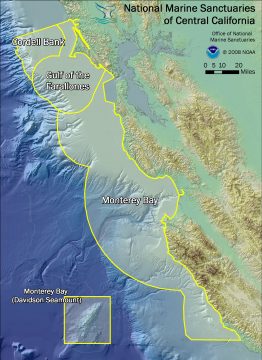 : “We do not regulate fishing … We have not negatively affected fisheries, in fact, over a half-billion dollars worth of fish have been landed since (sanctuary) designation.” That’s a surprise. There is ample evidence that sanctuary actions have negatively affected recreational and commercial fishermen. In 2007, fishermen witnessed the sanctuary’s leadership role in closing the best fishing areas in the region, displacing fishing effort to less productive areas. click here to read the letter (short and sweet) 10:29
: “We do not regulate fishing … We have not negatively affected fisheries, in fact, over a half-billion dollars worth of fish have been landed since (sanctuary) designation.” That’s a surprise. There is ample evidence that sanctuary actions have negatively affected recreational and commercial fishermen. In 2007, fishermen witnessed the sanctuary’s leadership role in closing the best fishing areas in the region, displacing fishing effort to less productive areas. click here to read the letter (short and sweet) 10:29






